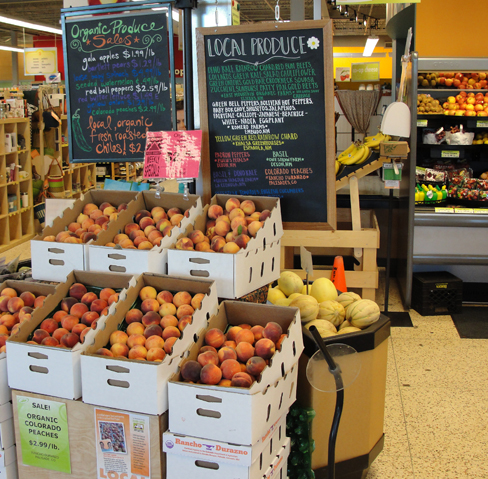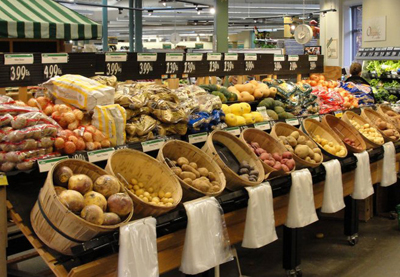Marketing to Food Retailers
With the popularity of “local” produce among many American consumers, opportunities have risen for farm growers selling produce to local grocery stores.
Overview
 The food retail industry saw a renaissance of interest in local and regional sourcing of fresh fruits and vegetables during the 2000s. This interest came within an industry characterized by heavy investment in fewer and larger centralized distribution centers. Although the distribution center model remains prominent within the food retail industry, some retailers have created flexibility within their distribution models to answer consumer demand for local produce. Large retailers are also finding transportation and distribution cost savings by sourcing fresh produce items from new or expanding producers. Smaller chains and local grocers remain potential markets for fresh produce growers expanding to wholesale volumes. Producers of value-added produce products may also find local groceries a possible market for their product. There are generally three avenues for selling produce to local groceries, based mainly on the size and scale of the store.
The food retail industry saw a renaissance of interest in local and regional sourcing of fresh fruits and vegetables during the 2000s. This interest came within an industry characterized by heavy investment in fewer and larger centralized distribution centers. Although the distribution center model remains prominent within the food retail industry, some retailers have created flexibility within their distribution models to answer consumer demand for local produce. Large retailers are also finding transportation and distribution cost savings by sourcing fresh produce items from new or expanding producers. Smaller chains and local grocers remain potential markets for fresh produce growers expanding to wholesale volumes. Producers of value-added produce products may also find local groceries a possible market for their product. There are generally three avenues for selling produce to local groceries, based mainly on the size and scale of the store.
3 Options

- Niche or specialty stores may often carry smaller product selections, with management and ownership entirely in the local area. The number of specialty food retailers has increased in recent years due to consumer interest in smaller store formats and specialty food items (like certified organic and local foods).
- Independent grocers function as a full-scale grocery, making purchase decisions at the store or regional level.
- National chain stores typically make purchase and distribution decisions beyond the local level, often employing regional distribution centers. However, many national chains also allow direct store delivery of some produce, particularly crops easily delivered in bulk, such as melons and pumpkins.

